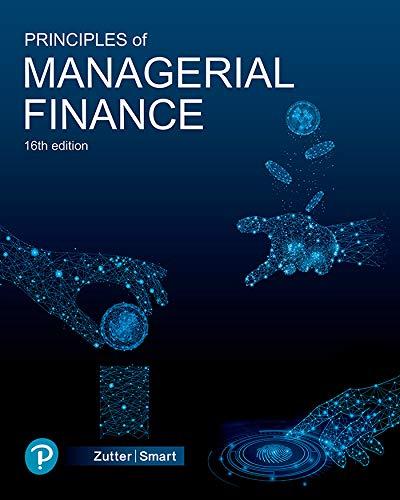please help me asap

Chapter 12 Activity - Total Cost of Ownership The topics covered in Chapters 11 \& 12 indirectly touch on the idea of 'Total Cost of Ownership', or TCO. The point of considering TCO is to recognize that there are a wide variety of ongoing costs beyond the initial price tag that keep assets running over the years. These include, but are not limited to, items such as maintenance, repairs, and updates. 1. First, imagine you are a CFO tasked with estimating the TCO for a new Information System that your IT department is very excited about. Beyond the initial purchase price of the system, what should be considered in a full TCO analysis? 2. Discuss some potential problems of ignoring the TCO and only focusing on the initial purchase price when estimating future cash flows and making capital budgeting decisions. Total cost of ownership for a personal vehicle Compare the total cost of ownership for the purchase of two personal vehicles of your choice (use two that are currently for sale!). One vehicle should be a new car, while the second should be a used car that would serve as a reasonable substitute for the new car (i.e. don't compare a Civic and Tahoe... you don't have to compare the same exact vehicle model, but make sure they are in the same "class'). What costs should you include? Maintenance/repairs, motor vehicle taxes, insurance, fuel... plus anything else you believe Total cost of ownership for a personal vehicle Compare the total cost of ownership for the purchase of two personal vehicles of your choice (use two that are currently for sale!). One vehicle should be a new car, while the second should be a used car that would serve as a reasonable substitute for the new car (i.e. don't compare a Civic and Tahoe... you don't have to compare the same exact vehicle model, but make sure they are in the same 'class'). What costs should you include? Maintenance/repairs, motor vehicle taxes, insurance, fuel... plus anything else you believe is relevant. This is going to require extra research, including things such as miles per gallon calculations, typical maintenance/repair needs, average insurance costs, and local motor vehicle tax information. Also consider how long you expect your ownership period to be... will you drive the vehicles until they fall apart? Or will you trade it in after several years? Regardless of which you choose, you should estimate a salvage value at the end of your ownership period (again, this salvage value estimate will require some research into expected resale values). 3. Provide a description of vehicle \#1, a new car. Calculate its total cost of ownership, being as detailed as possible in your costs. Note: All cash flows should be negative (costs), except for Salvage Value, which will be the only positive cash flow. Salvage Value will only occur ONE time, during the final year of ownership. Calculate the Net Present Value of this series of cash flows using a discount rate of 5%. Note: All cash flows should be negative (costs), except for Salvage Value, which will be the only positive cash flow. Salvage Value will only occur ONE time, during the final year of ownership. Calculate the Net Present Value of this series of cash flows using a discount rate of 5%. 4. Provide a description of vehicle \#2, a comparable used car. Calculate its total cost of ownership, being as detailed as possible in your costs. Note: All cash flows should be negative (costs), except for Salvage Value, which will be the only positive cash flow. Salvage Value will only occur ONE time, during the final year of ownership. Calculate the Net Present Value of this series of cash flows using a discount rate of 5%. 5. REACTION: Discuss your two options below. Which seems like the better financial decision? Explain, explain, explain










